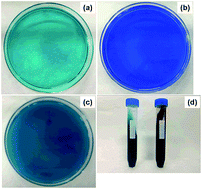Synthesis of different CuO nanostructures by a new catalytic template method as anode materials for lithium-ion batteries†
Abstract
CuO powders composed of different rod-like clusters or dandelion-like nanospheres are prepared by a low-temperature thermal decomposition process of Cu(OH)2 precursors, which are obtained via a catalytic template method. A tentative mechanism is proposed to explain the formation and transformation of different Cu(OH)2 nanostructures. X-ray diffraction, thermogravimetric analysis, scanning electron microscopy, field-emission scanning electron microscopy, transmission electron microscopy, infrared spectra analysis, Brunauer–Emmett–Teller measurements, and galvanostatic cell cycling are employed to characterize the structures and electrochemical performance of these CuO samples. The results show that these CuO samples obtained after 500 °C calcination have a stable cycling performance with a reversible capacity of over 587 mA h g−1 after 50 cycles. The dandelion-like CuO electrode shows the best rate performance with a high capacity of 511 mA h g−1 at 4C.


 Please wait while we load your content...
Please wait while we load your content...